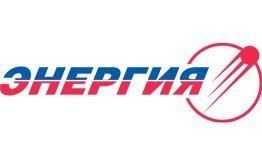Industry Aerospace Divisions NPO Energomash Founded 16 May 1946 | Traded as MCX: RKKE | |
 | ||
Website www.energia.ru/english/ Stock price RKKE (MCX) RUB 5,850.00 +100.00 (+1.74%)24 Mar, 5:33 PM GMT+3 - Disclaimer Subsidiaries Kosmos Airlines, MirCorp | ||
OAO S. P. Korolev Rocket and Space Corporation Energia (Russian: Ракетно-космическая корпорация «Энергия» им. С. П. Королёва, Raketno-kosmicheskaya korporatsiya “Energiya” im. S.P. Koroleva), also known as RSC Energia (РКК «Энергия», RKK “Energiya”), is a Russian manufacturer of spacecraft and space station components. The company is the prime developer and contractor of the Russian manned spaceflight program; it also owns a majority of Sea Launch. Its name is derived from Sergei Korolev, the first chief of its design bureau, and the Russian word for energy.
Contents
Overview
Energia is the largest company of the Russian space industry and one of its key players. It is responsible for all operations involving human spaceflight and is the lead developer of the Soyuz and Progress spacecraft, and the lead developer of the Russian end of the International Space Station. In the mid-2000s, the company employed 22,000—30,000 people.
The enterprise has been awarded with 4 Orders of Lenin, Order of the October Revolution and Russian Federation President's Message of Thanks. In addition, 14 cosmonauts employed by the company have been awarded the title "Hero of the Russian Federation".
Structure
The company consists of the following subsidiaries and branches:
As of 2009, 38% of the company's stock was owned by the Russian state.
History
The company was founded on 16 May 1946 and has been known successively as:
It is named after the first chief of its design bureau Sergei Korolev (1946–1966). His successors as chief designers were: Vasiliy Mishin (1966–1974), Valentin Glushko (1974–1989), Yuriy Semenov (1989–2005), Nikolay Sevastyanov (2005–2007). Its President and Chief designer was Vitaly Lopota, through August 1, 2014.
Korolev's design bureau was, beginning with the first artificial satellite Sputnik 1 and the first manned spaceflight of Vostok 1, responsible for a major part of the Soviet space program. It was the main rival of OKB-52 (later known as TsKBM, then the design bureau of Vladimir Chelomei) during the Soviet manned lunar programs and the Soviet space station program. OKB-1 was among others responsible for the development of the manned Soyuz spacecraft and its Soyuz (rocket), the N1 "Moon Shot" rocket, large parts of the Salyut space station program, the unmanned Progress resupply craft and designed the Energia rocket for the Buran space shuttle program. Since the early beginnings of the Luna programme it designed many space probes, among others of the Venera, Zond and Mars program.
The company continues to dominate a large part of the Russian space program, and a considerable part of the World's space program, with its Soyuz spacecraft having become the only crewed spacecraft conducting regular flights and the exclusive crew transport vehicle for the International Space Station after the Space Shuttle retirement. As of 2013 this will remain unchanged until a crewed US spacecraft from the Commercial Crew Development program will fly to the ISS – with the Chinese Shenzhou program being the only other program in the world with planned semi-regular crewed spaceflights.
The President of Energia, Vitaly Lopota, was removed from his post as president on August 1, 2014. Dmitry Rogozin indicated that this was the start of "Long-awaited personnel reform in [the Russian] space industry ... Tough times require tough decisions." Lopota was offered the position of vice president for technological development in the United Rocket and Space Corporation, the new company formed in 2013 to re-nationalize the Russian space industry.
Ongoing projects
Future projects
- Modernization of "Soyuz TMA" spacecraft for manned circum-lunar missions - pending commercial orders for space tourism.
- Development of "Parom" space tug (in order to replace "Progress M" cargo spacecraft).
- Development of multi-aimed Prospective Piloted Transport System (PPTS, Rus') (instead of abandoned Kliper project) for 6 persons.
Historic projects
Over the years the products of Energia and its predecessors included:
IRBMs and ICBMs
Including meteorological rockets as their modifications.
